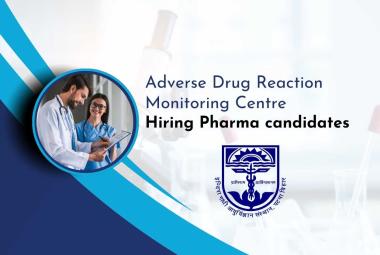{ DOWNLOAD AS PDF }
ABOUT AUTHORS:
Duvvuru Ashok Kumar1*, Languluri Reddenna2
1Department of Pharm-D, P. Rami Reddy Memorial College of Pharmacy, Kadapa, Andhra Pradesh, India
2Department of Pharmacy Practice, Rajiv Gandhi Institute of Medical Sciences, Kadapa, Andhra Pradesh, India
ashok.alex11@gmail.com
ABSTRACT
MS is the most common inflammatory-demyelinating disease of the central nervous system (CNS). MS is estimated to affect 400,000 persons in the United States and 2 million people worldwide. Women are affected twice as frequently as men, between the ages of 20 and 40. The etiology of MS is still unknown, but according to current data the disease develops in genetically susceptible individuals and may require additional environmental triggers. In this paper, we present the insight on simple cure for multiple sclerosis.
[adsense:336x280:8701650588]
REFERENCE ID: PHARMATUTOR-ART-2296
|
PharmaTutor (ISSN: 2347 - 7881) Volume 2, Issue 12 How to cite this article: AK Duvvuru, L Reddenna; Multiple Sclerosis: Overview on Simple Cure; PharmaTutor; 2014; 2(12); 29-32 |
INTRODUCTION
MS is the most common inflammatory-demyelinating disease of the central nervous system (CNS) and the most frequent cause of nontraumatic neurologic disability in young and middle-age adults.[1] MS is estimated to affect 400,000 persons in the United States and 2 million people worldwide.[2] Women are affected twice as frequently as men, between the ages of 20 and 40. Variability and diversity characterize the symptoms and presentation of MS. There is virtually no neurologic complaint that has not been ascribed to MS. In a significant number of patients who later develop typical MS, the clinical onset is with an acute or sub-acute episode of neurologic disturbance due to monoregional involvement of the CNS. This form of presentation is known as clinically isolated syndrome (CIS). These may consist of optic neuritis, isolated brain stem, partial spinal cord syndrome, or hemispheric syndromes. Fatigue has been described as the most common complaint in 80% of patients and the worst complaint in 40%.[3] Neuropsychological investigations demonstrated that cognitive dysfunctions are common in MS patients, affecting 40%–65% of them.[4] Most MS patients (85%) experience a relapsing-remitting (RRMS) course of the disease characterized by the episodic onset of symptoms followed by residual deficits or by a full recovery within a few weeks, especially in the early stage of the disease.[5] Within 25 years, however, most untreated RRMS patients will evolve into a secondary progressive phase (SPMS) characterized by a chronic and steady increase of physical symptoms and disability. PPMS differs from theRRMS subtype in that it affects both men and women at equal rates, occurs in older individuals, exhibits lower levels of inflammatory markers and myelopathic features, and is unresponsive to immunomodulatory agents.[6] Progressive relapsing MS, which is defined as progressive disease from onset, with clear acute relapses, with or without recovery, and with periods betweenrelapses characterized by continuing progression is quite uncommon. MS is a clinical diagnosis, dependent on a detailed history, careful neurologic examination, and supportive Para-clinical investigations, including MR imaging scans, CSF, evoked potentials and blood tests to exclude confounding diagnoses.
The classic MS diagnostic criteria are the evidence of lesions in the CNS disseminated in time and space. The etiology of MS is still unknown, but according to current data the disease develops in genetically susceptible individuals and may require additional environmental triggers. According to the pathogenesis, derived from the experimental autoimmune encephalomyelitis, autoreactive peripherally activated CD4 T cells recognize autoantigens within the CNS parenchyma in the context of class II molecules of the major histocompatibility complex (MHC) expressed by both local glial antigen-presenting cells and dendritic cells, which commit T cells toward a TH1 phenotype.[7, 8]Activated TH1 cells cause myelin disruption and the release of new potential CNS autoantigens.
[adsense:468x15:2204050025]
Secreted pro-inflammatory cytokines, such as interferon- and tumor necrosis factor (TNF)-α,and chemokines recruit additional unspecific inflammatory cells and specific antimyelin antibody-forming B cells that amplify tissue injury. Finally, the apoptotic death of T cells and their conversion toward a TH2 phenotype positively modulate the outcome of the lesion.[9]Additional cells are necessary for the typical MS lesions to occur such, as the CD8 cells, which show a more prominent clonal expansion within MS plaques and better than CD4 correlate with the extent of acute axonal injury. [10, 11] The pre-existing autoreactive T cells are activated outside the CNS by foreign microbes, self-proteins, or microbial super antigens. The activated T cells cross the blood-brain barrier through a multistep process. First, activated T cells that express integrin’s can bind to adhesion molecules on the surfaceof the endothelium. Then the T cells must pass through abarrier of extracellular matrix (ECM) in a step that involves matrix metalloproteases, enzymes that play a role in both the degradation of ECM and the proteolysis of myelin components in MS. Antimyelin antibodies—activated macrophages or microglial cells—complement and TNF-α are believed to cooperate in producing demyelination. In the neurodegenerative phase of the disease, excessive amounts of glutamate are released by lymphocytes, microglia, and macrophages.[12] The glutamate activates various glutamate receptors (AMPA and kainate receptors), and the influx of calcium through ion channels associated with different glutamate receptors may cause necrotic damage to oligodendrocytes and axons. It is clear that genetic factors play a prominent role in susceptibility to MS.[13] Both genetic and non-genetic environmental factors may be involved in susceptibility as well as outcome. There is increasing evidence that neuroaxonal damage is a key feature in MS lesions and that it has a major impact on permanent neurologic deficits.The pathologic hallmarks of MS are demyelinated plaques within the WM combined with inflammatory infiltrates consisting of lymphocytes (T cells and B cells) and activated macrophages/ microglia. Axonal loss andgliosis with astrocyte proliferation and glial fiber production are important pathologic features of MS. The most important goal of MS therapy is to prevent permanent neurologic disability. Acute relapses of MS are usually treated with corticosteroids that shorten symptoms, reduce inflammation, seal the blood-brain barrier, enhance nerve conduction, and alter the immune system, all of which are potentially beneficial in treating MS. Five drugs are currently approved by the Food and Drug Administration as disease modifying agents that alter the natural history of RRMS. The 4 self-administered drugs are intramuscular beta-interferon-la (Avonex), subcutaneous beta-interferon-1a (Rebif), subcutaneous beta-interferon-1b (Betaseron), and glatiramer acetate (Copaxone). These medications reduce the number of attacks in RRMS. These therapies, however, appear to be ineffectiveagainst the purely progressive form of the disease. Furthermore, longitudinal brain MR imaging data indicate that the accumulation of focal lesions early in the course of MS is associated with late progressive disability. Because available disease- modifying drugs can reduce the formation of such focal lesions, these data support the early institution of disease modifying therapy, especially in patients who are at high risk for future attacks and significant disability. Nevertheless, these treatments seem to have little effect once the disease has entered a secondary progressive phase. Italian Dr. Paolo Zamboni has put forward the idea that many types of MS are actually caused by a blockage of the pathways that remove excess iron from the brain - and by simply clearing out a couple of major veins to reopen the blood flow, the root cause of the disease can be eliminated.
Dr. Zamboni's revelations came as part of a very personal mission - to cure his wife as she began a downward spiral after diagnosis. Reading everything he could on the subject, Dr. Zamboni found a number of century-old sources citing excess iron as a possible cause of MS. It happened to dovetail with some research he had been doing previously on how a buildup of iron can damage blood vessels in the legs - could it be that a build up of iron was some how damaging blood vessels in the brain? He immediately took to the ultrasound machine to see if the idea had any merit - and made a staggering discovery. More than 90% of people with MS have some sort of malformation or blockage in the veins that drain blood from the brain. Including, as it turned out, his wife. He formed a hypothesis on how this could lead to MS: iron builds up in the brain, blocking and damaging these crucial blood vessels. As the vessels rupture, they allow both the iron itself, and immune cells from the bloodstream, to cross the blood-brain barrier into the cerebro-spinal fluid. Once the immune cells have direct access to the immune system, they begin to attack the myelin sheathing of the cerebral nerves – Multiple Sclerosis develops. He named the problem Chronic Cerebro-Spinal Venous Insufficiency, or CCSVI.
Zamboni immediately scheduled his wife for a simple operation to unblock the veins - a catheter was threaded up through blood vessels in the groin area, all the way up to the effected area, and then a small balloon was inflated to clear out the blockage. It's a standard and relatively risk-free operation - and the results were immediate. In the three years since the surgery, Dr. Zamboni's wife has not had an attack. Widening out his study, Dr. Zamboni then tried the same operation on a group of 65 MS-sufferers, identifying blood drainage blockages in the brain and unblocking them - and more than 73% of the patients are completely free of the symptoms of MS, two years after the operation. In some cases, a balloon is not enough to fully open the vein channel, which collapses either as soon as the balloon is removed, or sometime later. In these cases, a metal stent can easily be used, which remains in place holding the vein open permanently.
Dr. Zamboni's lucky find is yet to be accepted by the medical community, which is traditionally slow to accept revolutionary ideas. Still, most agree that while further study needs to be undertaken before this is looked upon as a cure for MS, the results thus far have been very positive. Naturally, support groups for MS sufferers are buzzing with the news that a simple operation could free patients from what they have always been told would be a lifelong affliction, and further studies are being undertaken by researchers around the world hoping to confirm the link between CCSVI and MS, and open the door for the treatment to become available for sufferers worldwide. It's certainly a very exciting find for MS sufferers, as it represents a possible complete cure, as opposed to an ongoing treatment of symptoms. The new study compared the outcomes of nine patients who had undergone Zamboni’s treatment with ten who’d received sham surgeries. Six months after the procedure, the patients receiving the neck venoplasty were worse off – while only one of the sham patients relapsed, four of the patients receiving the treatment had relapsed by follow-up.Furthermore, brain scans showed that whether or not patients received the treatment surgery or the sham did not affect the size or number of MS lesions in the nervous system.[14]
CONCLUSION
It's certainly a very exciting find for MS sufferers, as it represents a possible complete cure, as opposed to an ongoing treatment of symptoms.
REFERENCES
1. Rodriguez M, Siva A, Ward J, et al. Impairment, disability, and handicap inmultiple sclerosis: a population-based study in Olmsted County, Minnesota.Neurology 1994; 44:28–33
2. Hauser S. Multiple sclerosis and other demyelinating diseases. In: IsselbacherKJ, Martin JB, Fauci AS, et al, eds. Harrison’s principles of internal medicine. NewYork: McGraw-Hill; 1994:2287–955.
3. Reingold SC. Fatigue and multiple sclerosis. MS News Br Mult Scler Soc 1990; 142:30–316
4. Bagert B, Camplair P, Bourdette D. Cognitive dysfunction in multiplesclerosis: natural history, pathophysiology and management. CNS Drugs2002; 16:445–55
5. Weinshenker BG, Bass B, Rice GP, et al. The natural history of multiplesclerosis: a geographically based study. I. Clinical course and disability. Brain1989; 112:133–46
6. Montalban X. Primary progressive multiple sclerosis. Curr Opin Neurol 2005; 18:261–6623. Pashenkov M, Teleshova N, Link H. Inflammation in the central nervoussystem: the role for dendritic cells. Brain Pathol 2003; 13:23–33
7. Hafler DA, Slavik JM, Anderson DE, et al. Multiple sclerosis. Immunol Rev2005;204:208–231
8. Link H. The cytokine storm in multiple sclerosis. Mult Scler 1998;4:12–15
9. Lassmann H. Pathology of multiple sclerosis. In: Compston A, Ebers G, LassmannH, et al, eds. McAlpine’s multiple sclerosis. London: Churchill Livingstone;1998:323–57
10. Steinman L. Multiple sclerosis: a two-stage disease. Nat Immunol 2001;2:762–64
11. Oksenberg JR, Hauser SL. Genetics of multiple sclerosis. Neurol Clin 2005;23:61–75
12. Trapp BD, Ransohoff R, Rudick R. Axonal pathology in multiple sclerosis:relationship to neurologic disability. Curr Opin Neurol 1999;12:295–302
13. Lassmann H. Pathology of multiple sclerosis. In: Compston A, Ebers G, LassmannH, et al, eds. McAlpine’s multiple sclerosis. London: Churchill Livingstone;1998:323–57
14. Italian doctor may have found surprisingly simple cure for Multiple Sclerosis. gizmag.com/ccsvi-multiple-sclerosis-ms-cure-zamboni/13447/
NOW YOU CAN ALSO PUBLISH YOUR ARTICLE ONLINE.
SUBMIT YOUR ARTICLE/PROJECT AT editor-in-chief@pharmatutor.org
Subscribe to Pharmatutor Alerts by Email
FIND OUT MORE ARTICLES AT OUR DATABASE









